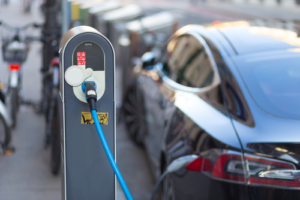The Reality Behind Government Spending on Green Initiatives: Are Taxpayer Dollars at Stake?
At Extreme Investor Network, we’re committed to delivering unique insights that go beyond the surface to help you understand the complexities of economic policies. Today, we dissect a pressing issue surrounding government spending on environmental initiatives, particularly in the realm of electric vehicles (EVs), and the implications it has for taxpayers.
The Electric Vehicle Fiasco: A Taxpayer’s Nightmare
Governments around the world are scrambling to allocate tax dollars toward initiatives aimed at combating climate change. In the U.S., the Biden Administration has poured billions into electric vehicle (EV) infrastructure, yet the results have been underwhelming at best. A prime example is Biden’s ambitious $7.5 billion plan to establish a network of EV charging stations across the nation. Unfortunately, over a two-year span, only seven charging stations materialized. This leaves taxpayers wondering: where did our money go?
The Postal Service Conundrum
The latest climate spending debacle involves the U.S. Postal Service (USPS) and its decision to transition to what they call "Next Generation Delivery Vehicles" (NGDVs). With a hefty $3 billion allocated from the $10 billion project stemming from the Inflation Reduction Act—a major piece of legislation often criticized as a cover for extensive climate spending—this initiative aimed to overhaul the postal fleet with 60,000 electric vehicles ordered from defense contractor Oshkosh.
The catch? Oshkosh, renowned for its military vehicles, has never produced an electric truck. This raises questions about the selection process for vendors, particularly when there are more experienced manufacturers in the field. The lack of experience has been painfully evident, as reports indicate that since the funding was approved, only 93 vehicles have been delivered—and these weren’t without their fair share of issues, including leaks and faulty airbags.
Production Woes: An Ineffective Outlet for Change
Oshkosh initially planned to manufacture just one vehicle per day, a staggering shortfall given the ambitious targets set forth. Only recently did they announce a goal to ramp up production to 80 vehicles per day. Still, this is a far cry from the 3,000 vehicles that were expected amidst an already delayed rollout. By choosing to work with a contractor ill-equipped for such an endeavor, the government has not only wasted taxpayer money but has also hindered the transformative potential of electric vehicles in the public sector.
The Bigger Picture: Evaluating Environmental Impact
Let’s take a moment to evaluate the real impact of transitioning to electric postal trucks. Are these small delivery vehicles truly significant contributors to pollution? Should Americans accept a strike in service during inclement weather due to unreliable electric vehicles? The age-old postal motto—“Neither snow, nor rain, nor heat, nor gloom of night stays these couriers from the swift completion of their appointed rounds”—appears to stand at odds with the current push for electrification.
What Can We Learn?
At Extreme Investor Network, what we see here is a vital lesson in fiscal responsibility and efficient project management. When taxpayer dollars are on the line, accountability and efficacy should be top priorities. Instead of poorly planned initiatives that drain resources without delivering tangible benefits, policymakers should focus on collaboration with established EV manufacturers, strategic localization of production, and most importantly, transparency with taxpayers.
The future of economic sustainability relies on informed choices and responsible spending, not on superficial climate initiatives that do not pan out. We encourage our readers to stay engaged, advocate for accountability, and demand effective change in our governmental spending practices. Together, we can better navigate the complexities of investment in our nation’s future.
For more insights into government spending and economic policy, stay connected with Extreme Investor Network where we explore the intersection of investment, policy, and sustainable practices.

